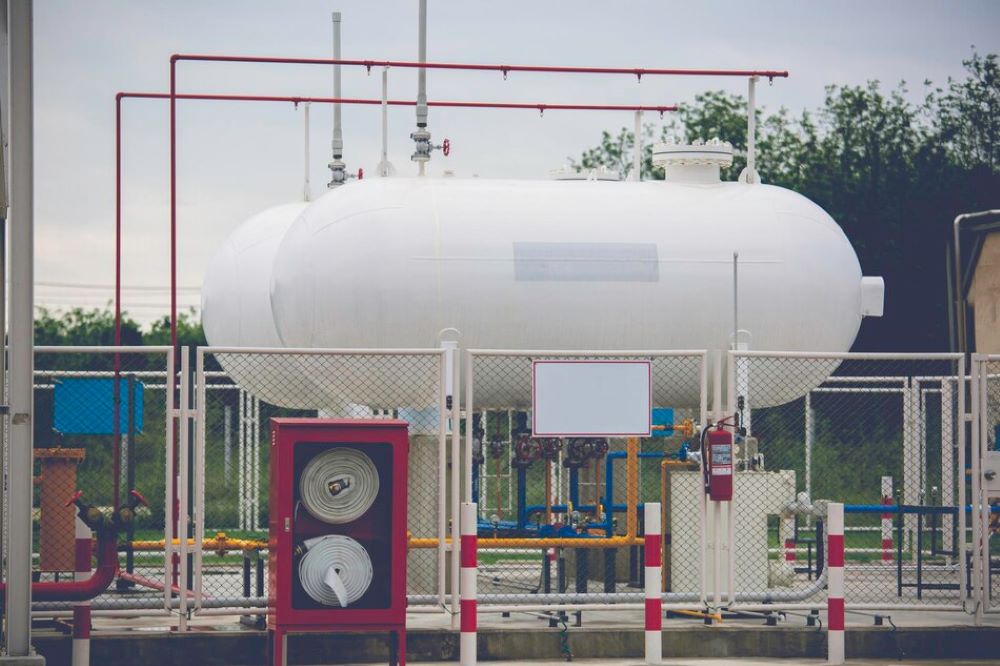
It is About meeting quality standards, preventing corrosion, and reducing about meeting quality standards, preventing corrosion, and reducing emissions.
The Great Separation
Once the gas is purified and the “bad apples” are thrown out, it’s time for a little separation dance. This part is like sorting your laundry but way more high-stakes. In fractionation, we split the natural gas into its components. You’ve got your methane for energy, and then you’ve got the natural gas liquids (NGLs) – that’s your ethane, propane, and butane, to name a few. These NGLs are like the diamonds in the rough, and they’ve got many cool uses in petrochemicals, plastics, and more.
Pump It Up and Ship It Out
After all that purifying and separating, our gas is almost ready for prime time. But it needs a little boost before it’s fit for travel. That’s where compression comes in. We increase the gas pressure to make it suitable for traveling through pipelines or loading onto trucks and tankers. These pipelines can stretch for miles and miles, connecting gas fields to power plants, homes, and factories – you name it. Efficient compression ensures a steady and reliable natural gas supply, essential for keeping our homes warm and our stovetops sizzling.
Quality Check

Imagine you’re baking cookies and need the perfect ingredients mix. Well, gas is no different! Quality control is the secret sauce that keeps everything running smoothly. Advanced analytical techniques like gas chromatography are used throughout the refining process to monitor the gas continuously. We want to make sure it meets those strict quality standards. After all, nobody wants a batch of cookies with too much salt!
The Final Mile
Our journey isn’t over yet! Once the refined natural gas reaches its destination, it’s like a star athlete preparing for the big game – it needs a bit of rest before showtime. Gas is stored in tanks or underground storage facilities, acting as a buffer to meet changes in demand and ensure a steady supply. Distribution networks then take over, transporting the gas to homes, businesses, and industrial facilities through an extensive network of pipelines.
Gas distribution is like a well-choreographed dance, ensuring the gas reaches its intended users safely and efficiently.
Being Earth-Friendly
Now, let’s talk about the elephant in the room – the environment. We know that the primary component of natural gas, methane, can be a bit of a troublemaker when released into the atmosphere. But fear not! The gas industry is working hard to be more environmentally friendly. Measures like leak detection and repair programs, improved equipment and technologies, and stricter regulations are being implemented to reduce methane emissions.

So, there you have it – a friendly, behind-the-scenes tour of the gas refinery. From drilling deep underground to compression, quality control, and distribution, each step is crucial in ensuring a clean and reliable energy source.
Next time you turn on your gas stove, heat your home, or use natural gas for any purpose, take a moment to appreciate the incredible journey it’s been on to reach you. Behind the scenes at the gas refinery, a world of innovation, technology, and dedication makes it all happen.
Pros of Gas Refining:
Abundant Energy Source:
Plentiful Supply: Natural gas is one of Earth’s most abundant energy resources, ensuring a stable and long-term energy supply.
1. Clean Burning:
Low Emissions: Natural gas is a cleaner burning fossil fuel than coal and oil, emitting fewer greenhouse gasses and pollutants when burned for energy production.
Reduced Air Pollution: It produces fewer harmful pollutants such as sulfur dioxide (SO2) and nitrogen oxides (NOx), contributing to smog and respiratory issues.
2. Versatile Applications:
Multi-Purpose: Natural gas can be used for various purposes, including heating, electricity generation, cooking, and as a fuel for vehicles.
Industrial Use: Natural gas liquids (NGLs) extracted during refining have industrial applications in petrochemicals and manufacturing.
3. Energy Security:
Domestic Production: Many countries can access domestic natural gas reserves, reducing dependence on foreign energy sources and enhancing energy security.
4. Infrastructure:
Existing Infrastructure: Gas distribution networks, pipelines, and storage facilities are already in place, making it easier to transport and deliver natural gas to consumers.
Cons of Gas Refining:
1. Environmental Impact:
Methane Emissions: Methane, the main component of natural gas, is a highly potent greenhouse gas. Leaks and emissions during extraction, refining, and transportation contribute to climate change.
Water Contamination: Hydraulic fracturing (fracking), a common method for extracting natural gas, can potentially contaminate groundwater with chemicals and methane.
2. Non-Renewable:
Finite Resource: Natural gas is a non-renewable fossil fuel that will eventually be depleted. Reliance on natural gas can hinder the transition to renewable energy sources.
3. Price Volatility:
Price Fluctuations: The price of natural gas can be volatile due to factors like supply and demand, weather conditions, and geopolitical events, leading to uncertainty for consumers.
4. Infrastructure Costs:
Investment Required: Developing and maintaining the infrastructure for gas extraction, refining, and distribution can be costly and may require significant investment.
5. Safety Concerns:
Explosive Risk: Natural gas is highly flammable and poses a risk of explosions if improperly handled and stored.
Health and Safety: Workers in the gas industry are exposed to occupational hazards, including potential accidents and health risks.
Methane Leakage:
Leakage Issues: Methane leaks during the extraction and transportation of natural gas can lead to safety concerns, environmental damage, and energy losses.
In summary, gas refining offers advantages such as a reliable energy source, cleaner burning compared to some alternatives, and versatile applications. However, it also comes with challenges, including environmental concerns related to methane emissions, non-renewability, price volatility, and safety issues. Balancing the benefits and drawbacks of gas refining is essential when considering its role in the energy landscape and the need for sustainable energy solutions.

